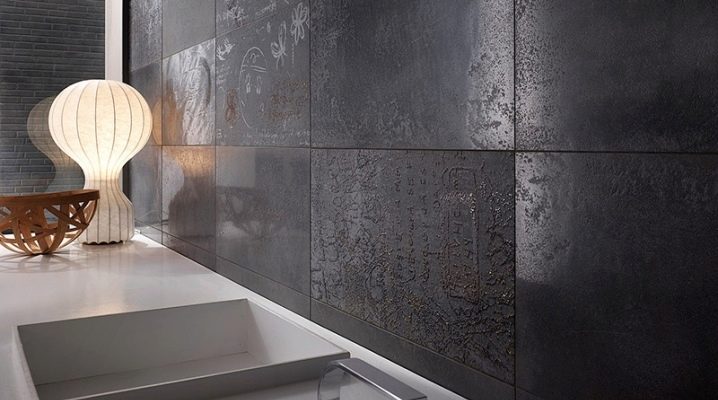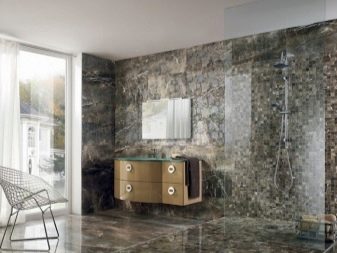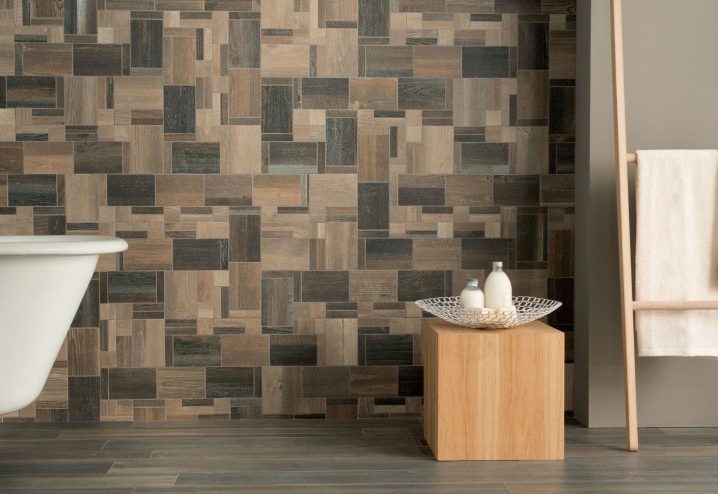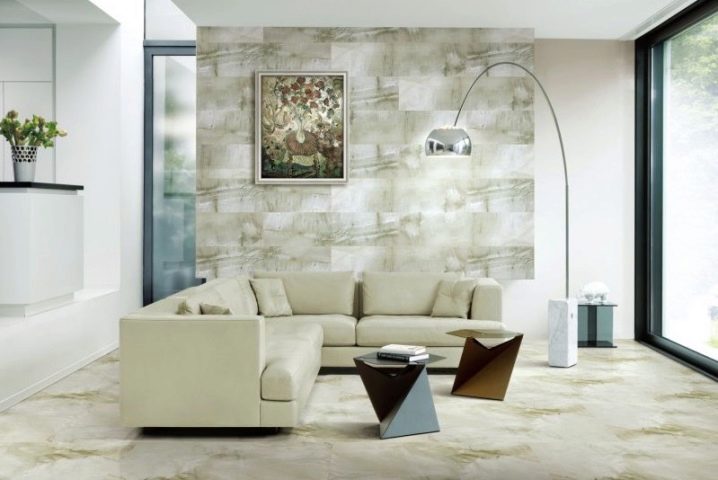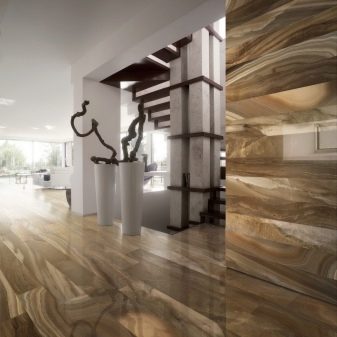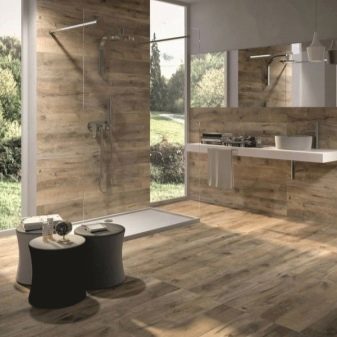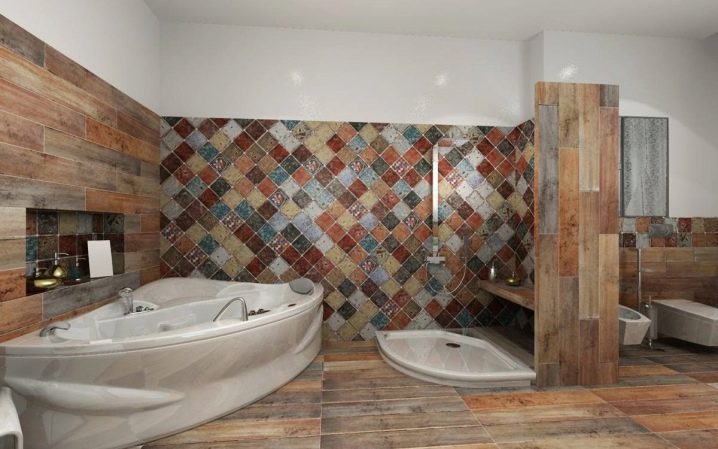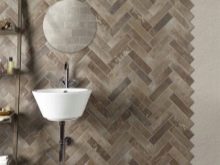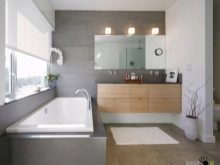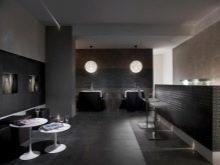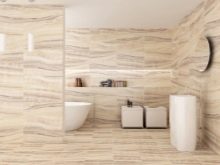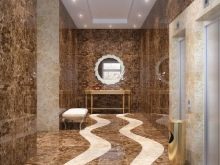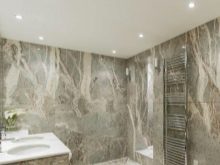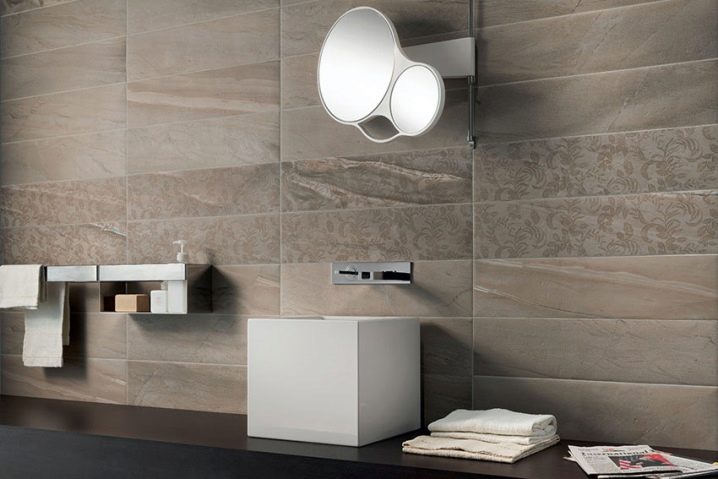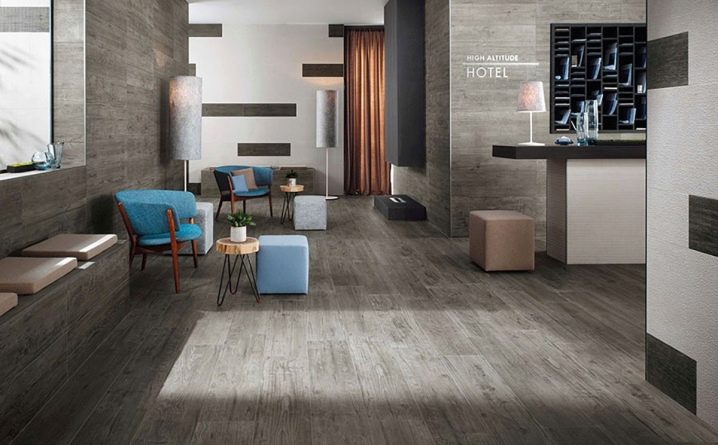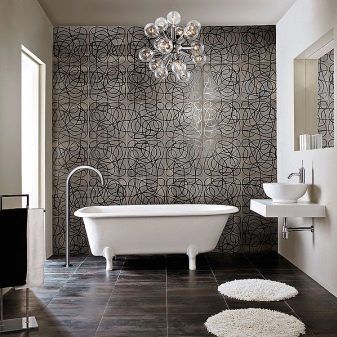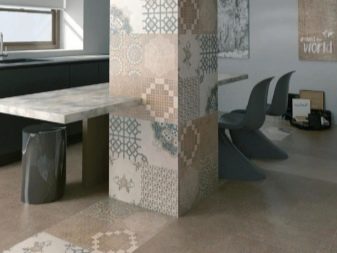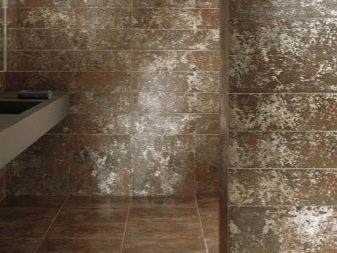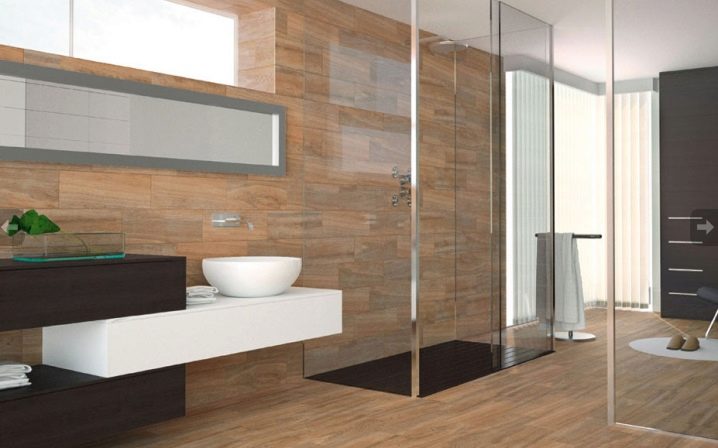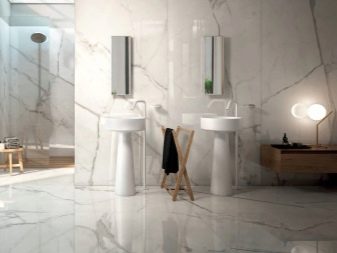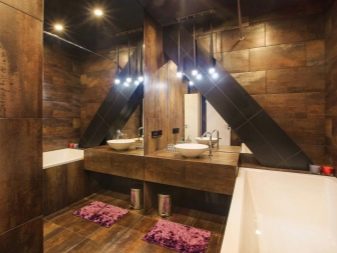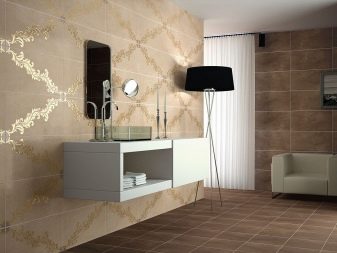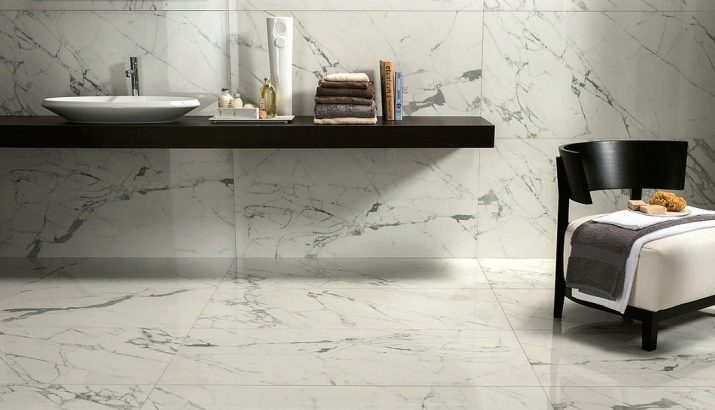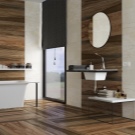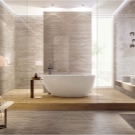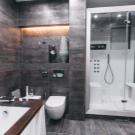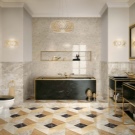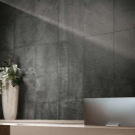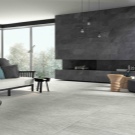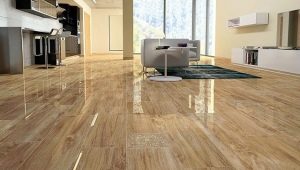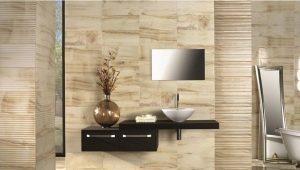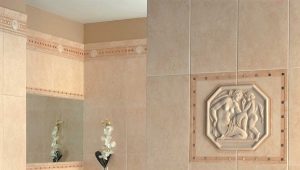Porcelain tiles for walls: the pros and cons
Porcelain stoneware is a multifunctional material that has now found use in interior and exterior wall finishing. It is firmly entrenched in our construction market due to its advantages over conventional ceramic tiles.
Special features
Today, porcelain stoneware is quite often found on the walls of buildings and in interior decoration. In its appearance, ceramic granite is similar to ordinary tiles, but it has a clearly defined stone structure. This material can be granite with a variety of colors and shades or marble with characteristic veins.
The surfaces, finished with marble, look rich and solid, and in their natural environment this stone is brittle: there are traces left on it from the effects of other, more solid objects. The process of obtaining and processing such a stone is very time consuming and complex.For this purpose, a special method of manufacturing porcelain. Due to this material has acquired excellent quality and excellent performance.
The process of granitization itself is practically no different from the method of manufacturing conventional ceramic tiles. In the manufacture of the material, a certain amount of granite chips is added to the red clay, which gives the product a structure similar to natural stone.
The proportionality of the added granite and clay can be different, which actually leads to an increase or decrease in the price of the finished product. After the first firing, it turns out a solid monolithic slab, similar to stone, but with the strength of ceramics. This ratio is the main link in the process of obtaining high-quality material.
Ceramics are burned at a temperature of 900 degrees, while granite is only a binder and decorative component. With a large amount of added granite, the finished material is much more beautiful, but its technical characteristics are reduced.
After the first firing, glaze is applied to the ceramic granite tile and again subjected to heat treatment.With the mode of 1100-1400 degrees, the upper surface melts and then turns into glass. In the process of this technology is obtained smooth tile, in appearance resembling natural granite.
Kinds
This facing material has many exceptional qualities and can be used for exterior walls and inside the building. It is precisely the porcelain tile that is a priority for many builders and customers during the finishing works. In its diversity, you can easily get confused, and the face of the tile when choosing is determined not only by the size and color range.
Depending on different methods of heat treatment and various forms, it is divided into the following types:
- Matt - This is the most common and relatively inexpensive form of porcelain. Used in the decoration of the facade. In the manufacturing process, it is not subject to special treatment, and after firing, its appearance does not change. Porcelain tile does not contain any auxiliary ingredients, and its surface, unlike others, does not shine and does not have smoothness. Due to these factors he has the most affordable price.But at the same time, it has a number of advantages: high wear resistance and frost resistance, does not undergo deformation at different air temperatures and all sorts of mechanical damage.
It has found wide application in the construction industry, it is excellent for finishing stations, car dealerships, garages, warehouses, shopping centers. It is in good harmony with any wall material, which gives great opportunities for designing a design.
- Polished finish. After firing, this material is specially treated with abrasives, from the impact of which a shiny surface appears. But this tile is contraindicated for use in flooring due to the large slip coefficient. At the same time, it has a lower hardness, and scratches appear on it much faster than on ordinary ceramic granite. Suitable for walls, because this tile is a perfect modification that enhances the catchy appearance and imitates the structure of marble or natural granite.
- Semi-polished ceramic granite. It is made by cutting and subsequently polished from finished matte porcelain stoneware.After such processing the tile gets a peculiar relief surface. It is ideally combined with other types of surface. This type has found its use exclusively for wall finishing and looks unique and pretty, although its price is much higher than matte.
- Satin or polished porcelain stoneware characterized by a matte surface with a slight soft gloss. It is obtained by grinding finished ceramic granite with mineral salts. This process takes place before firing. A distinctive feature of this option is a high resistance to dirt and a slightly aged look, which gives it a special charm.
- Glazed or smaltized porcelain stoneware. The process of making such a tile is that the surface is covered with a special small glaze and only then it is subjected to heat treatment. Glaze helps to improve the technical characteristics, increases resistance to abrasion and pollution. It has a relatively small percentage of moisture absorption and can be used inside and outside buildings.
The tile is frost-resistant and maintains an atmospheric temperature difference.It is used exclusively as a wall covering, as it quickly loses its appeal on the floor. It has a great aesthetic appearance that gives unlimited possibilities when creating designer interiors.
- Production of structured or textured porcelain stoneware possible with special molds. With the help of them it is possible to imitate natural stone, granite, wood and many other textural surfaces. The main advantage of such a tile is its anti-slip properties. Also facing material has high strength, frost resistance and long service life, has a much more solid surface and a pronounced texture. These factors predetermine high prices for this type of porcelain stoneware.
Mosaic porcelain tiles are of two types: with a glossy shine and a matte finish. Mosaic is the most expensive and difficult to install material. Installation of such a tile is very labor intensive, but its decorative look must be given its due.
Advantages and disadvantages
Large format porcelain tile or ceramic granite slip tile is a heavy and unique material, but, despite this, it is widely used for facing walls and facades.Having a high density and natural appearance, this porcelain tile combines an analogy with other building materials of ecological class. The demand for the use of this material is caused by a striking resemblance to natural elements: marble and polished sandstone. Durable color stability gives the tile an aesthetic and attractive look.
Many professionals have come to the conclusion that porcelain stoneware is a noble and worthy material with which you can and should work, although its styling requires high skill. With a considerable weight of tiles, wall finishing needs a careful approach in selecting and applying the intended types of glue, preparing the base, firmly fixing the tile until the glue dries and selecting tools for cutting and setting.
But considering all these nuances for wall cladding, porcelain stoneware fits much better than other materials, because it has a number of positive advantages:
- It has great strength, so it is difficult to damage or break it after installation on the wall.
- After finishing the facade with this material, you will get auxiliary sound and heat insulation.
- The tile is perfectly adapted to various environmental influences: it is not afraid of water, heat, or temperature differences.
- The material is resistant to all known acid and alkaline solvents.
- It has a high fire safety: it does not burn and prevents the fire element from raging, since it has high fire resistance characteristics.
- Environmentally friendly product. All materials included in the structure of porcelain, of natural origin, because the process does not use chemical additives.
- When facing walls it does not need additional cleaning and protection - the material is immediately suitable for use.
- The material does not need constant and special care: the tile can be simply washed with water or detergent.
With all its positive qualities, porcelain has also negative sides:
- with the existing high strength and withstanding a large pressure on the surface, the slip tiles are fragile: they easily beat, prick and crack when dropped or hit hard;
- fixing the tile on the wall is carried out in three variants and each of them requires professionalism in this area of work;
- porcelain stoneware is one of the most expensive finishing materials, and working with it requires great care and skill;
- in the event of damage, the material cannot be recovered; it only needs to be replaced with a cracked or bat tile with a whole.
This material is suitable for the hallway and living room, as well as for other rooms in the house. It can be laid out in the form of panels or choose a seamless option.
You can find out whether the granite should be laid on the walls from the following video.
